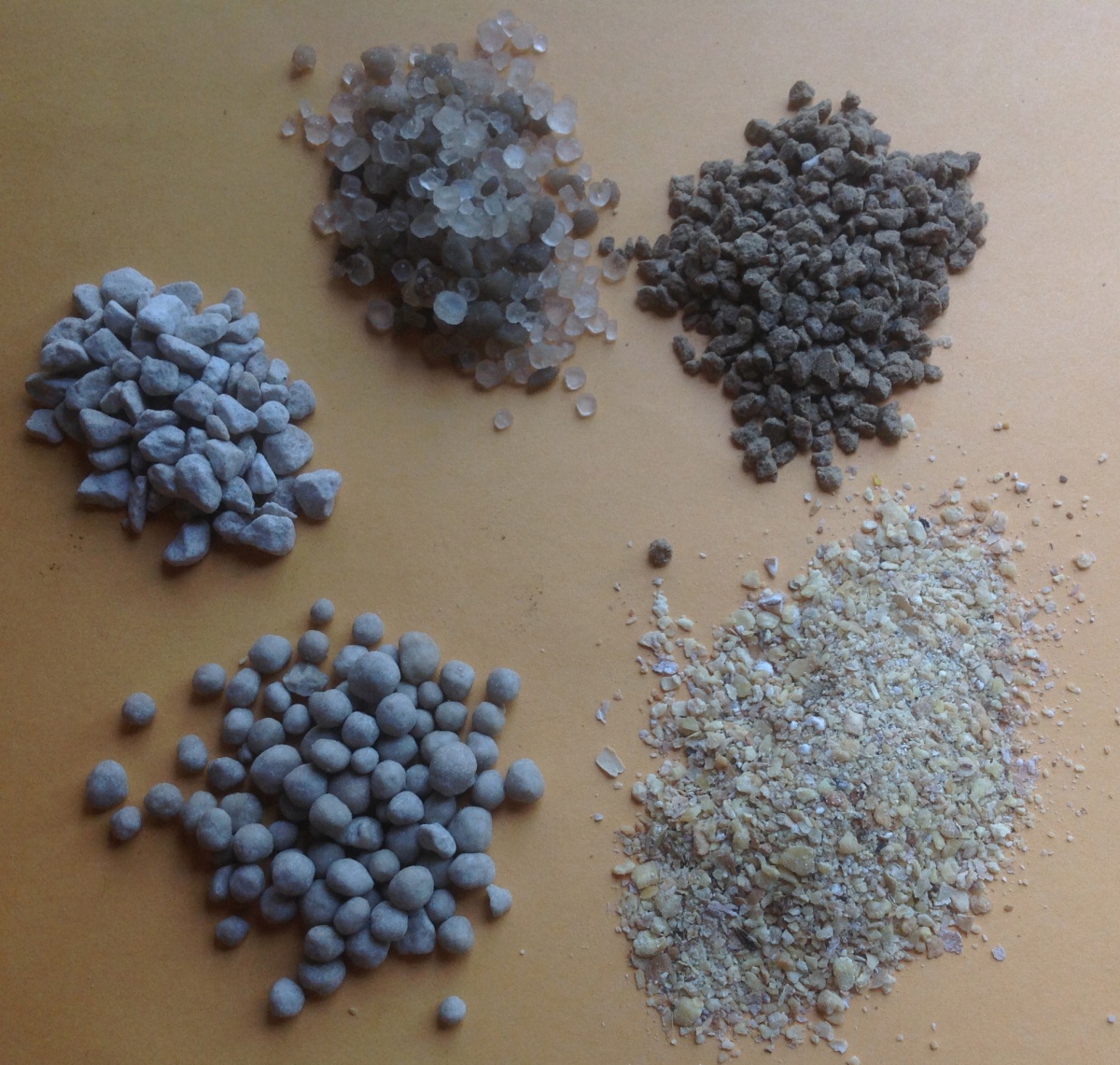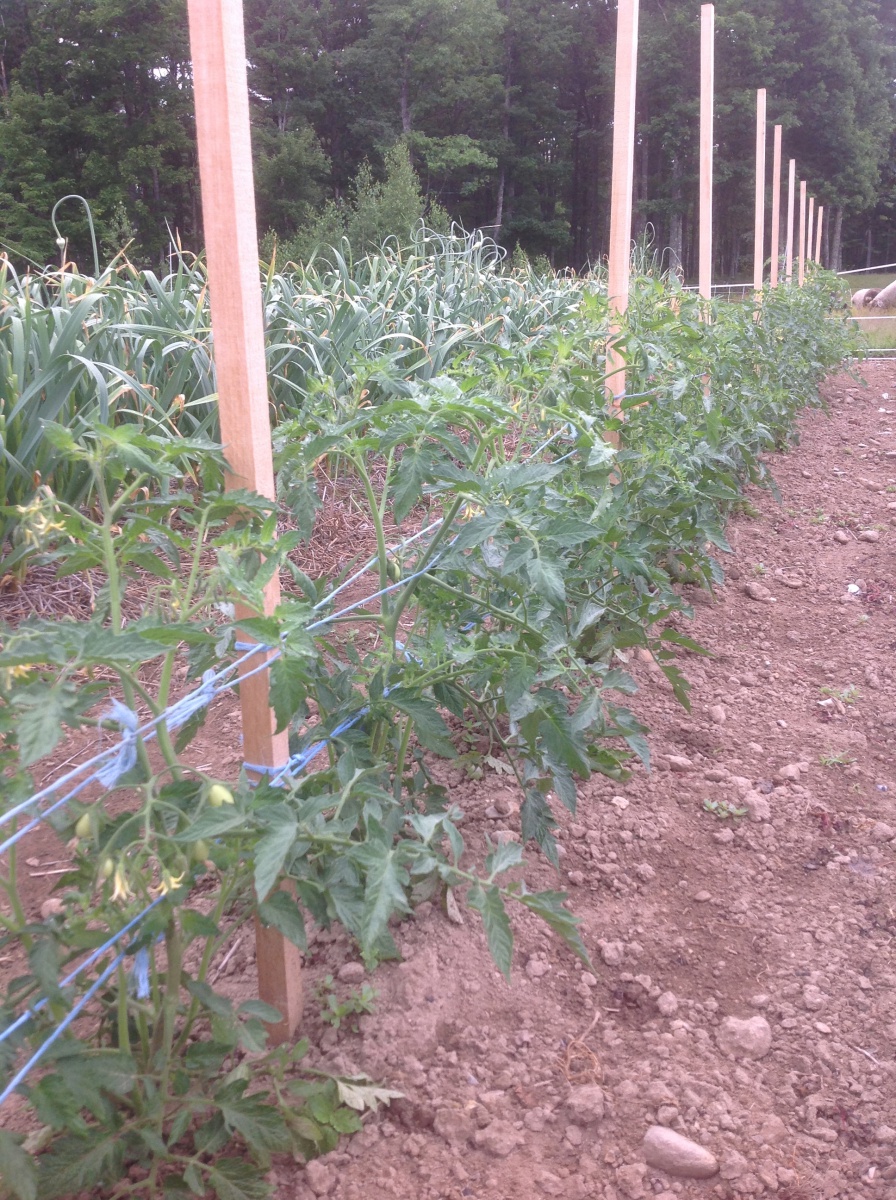We recommend that gardeners test their soil before planting to de- termine the amount of lime and fertilizers needed. Soil testing can be done through a number of private and public labs. UNH Cooperative Extension also offers soil testing services.
With or without a soil test, however, gardeners may follow these general rules of thumb for fertilizing vegetable gardens.
Adjusting the pH
Vegetable crops grow best in soils with a pH of 6.5-6.8. Our native NH soils are usually much more acidic than this (4.5-4.8), and lime or wood ash are added to raise and maintain a high pH, as well as to supply calcium and magnesium. Lime works slowly, so should be applied in the fall if possible. Wood ash acts more quickly, and can be applied in the spring before planting. It is easy to apply too much wood ash; if you are using wood ashes from your home stove, we do not recommend adding them to your garden every year unless a soil test indicates the need.
Fertilizers
All fertilizers are sold with a nutrient analysis of three numbers, such as 10-10-10. These numbers refer to the percentage of nitrogen (N), phosphorus (P), and potassium (K) in the fertilizer. To get the same amount of nitrogen, you would need to use twice as much of a 5-5-5 fertilizer as you would for a 10-10-10 fertilizer.
Organic fertilizers are plant- or animal-based materials that provide these same nutrients: N, P and K. Organic blended fertilizers are sold with an analysis, but some excellent plant- or animal- based organic fertilizers such as soybean meal or alfalfa meal are sold as feeds and therefore do not come with fertilizer analyses. You can use either synthetic or organic sources, or a mixture of the two. Regardless of the type of fertilizer you use, incorporate fertilizer(s) thoroughly within the top few inches of soil before planting.

If you HAVE soil test results, you will know how many pounds of N, P and K you will need for a given area, and can calculate the amounts needed of the fertilizers you wish to use (see SIDEBAR, Fertilizer Math). If you don’t have soil test results, you can follow the general guidelines below.
Lime or Wood Ash
As a general guidance; maintain pH by adding 75 lbs /1000 sq. ft. of dolomitic (high-mag) limestone every three years.
OR
150 lbs /1000 sq. ft. of wood ash every three years.
Synthetic Fertilizers
25 lbs/1000 sq. ft. of 10-10-10 or the equivalent.
Organic Fertilizers
60 lbs/1000 sq. ft. of 4-3-3 or the equivalent organic blended fertilizer.
OR
40 lbs/1000 sq. ft. of soybean meal (7% N) PLUS 15 lbs/1000 sq. ft. of bone char (16% P).
OR
100 lbs/1000 sq. ft. of rock phosphate (3% available P) PLUS 8 lbs/1000 sq. ft. of sulpomag (sulfate of potash-magnesium, 22% K).
Fertilizer Math
If you have a fertilizer that is 10-0-0, it is 10% Nitrogen. This means that there are 10 lbs of N for every 100 lbs of fertilizer. If your soil test rec- ommends 2 lbs of N per 1,000 square feet, how much of that 10% N fertilizer would you need? To answer this, we set up a simple equation like this:
INSERT PHOTO
To solve it, we just multiply the diagonals:
100 × 2=10 × X And then it gives us:
X=200/10=20 lbs
We then know that we need 20 lbs of a 10-0-0 fertilizer per 1,000 square feet to give us 2 lbs of N in that same area.
Using this same strategy, you can figure out that there are many other ways to get 2 lbs of N, such as with 16.7 lbs of blood meal (12% N), or 4.4 lbs of urea (45% N), or 28.6 lbs of soybean meal (7% N).
Timing
If you are using organic slow-release fertilizers, the entire amount of fertilizer that you need can be applied before planting. Make sure to incorporate it throughout the soil in the planting rows or beds, to a depth of 4-6 inches. If you are using synthetic or quick-release sources, apply one-half of the total amount needed before planting, and apply the remainder 4-6 weeks later in what is called a “sidedress” application. When you apply fertilizers during the growing season, place alongside the plants or in a circle around the plant, just around the drip line of the plant, or the distance away from the base that the furthest branches reach. Avoid contacting the base of the plants, and gently incorporate into the soil surface.
Manures
For safety, UNH Cooperative Extension recommends using only composted manures on garden crops, unless manure is incorporated to grow a cover crop first, with subsequent food crops grown after cover crop has decomposed. For more information, please see the fact sheet Guidelines for Using Animal Manures and Manure-Based Compost in the Garden. Continual use of manures and manure-based composts will result in high levels of phosphorus, which can cause nutrient problems in local lakes and ponds during runoff events.

Download the resource for the complete fact sheet.
